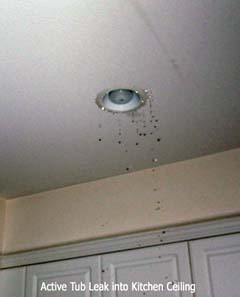I’ve recently noticed that many homes refurbished by a bank or private investor are coming back onto the market. Bank-owned properties are usually in high demand, attracting multiple offers the day the property is listed, as first-time home buyers and investors aggressively vie for them. But are they really such a good deal?
Properties are now appreciating enough for investors to purchase, renovate, and put them back on the market in a matter of months. Known as “flipped” properties, they typically feature attractive renovations that draw buyers, including new paint, flooring, and possibly new appliances and cabinets in the kitchen and bathrooms.
As alluring as these properties are with their fresh, modern colors and fixtures, problems often lurk “underneath the covers” in the components that make up the home’s primary infrastructure. Areas like roofing, heating, A/C, plumbing, and electrical systems are generally ignored during the renovation. Additionally, many of these components are already beyond their estimated life, meaning that not only will they be prone to fail, but will pose health and safety risks as well.
This is compounded by the fact that non-licensed workers are often hired to complete these renovations to keep the investor’s costs low. The result becomes obvious when I find mis-wired outlets, unsecured toilets, and improperly installed appliances. This can all add up to a “house of horrors” to the buyer looking for a value purchase.
For example, I recently inspected a bank-owned house in Mira Mesa. The three bedroom, two bathroom house had received new paint inside and out, new wood laminate flooring, new kitchen cabinets and appliances. The bathrooms had new vanities with original toilets and shower/tubs.
During my inspection, which generally takes up to three hours to thoroughly inspect all the major components of the home, I first grew concerned when I tested the wall outlets. Most of the outlets in the home had been replaced; however, many indicated reversed polarity. Two outlets in one of the bedrooms were completely dead, and I couldn’t verify if the wall switch operated an outlet or ceiling light.
It was very apparent that an unskilled worker upgraded all these outlets. I immediately investigated the electrical panel to see if the breakers were engaged. The manufacturer is Zinsco, whose panels are known to have defects that can cause fires. The panel was also beyond its estimated life, carrying the added risk of the breaker failing to open in an overloaded condition.
I noted one breaker appeared open. But when I attempted to reset the breaker, it immediately opened up again. This indicated an overloaded condition. I stopped inspecting the electrical system further and advised the buyer of the dangers and to have a licensed electrician provide an estimate for upgrading the unit.
Moving on, I started to evaluate the central heating furnace. Our fine, moderate climate has lulled many Southern Californians into ignoring their heating and air conditioning systems. In this home, the ignored furnace had accumulated years of dust, and the air filter hadn’t been changed in years. These older neglected furnace systems pose the very serious potential danger of carbon monoxide leaking into the air supply system. I again recommended that the buyer solicit additional evaluations by licensed contractors to further assess these conditions and costs for repair.
In contrast, I have inspected other flipped properties and was able to validate the safe functionality and installation of all the home’s components. But my experience in this area is hit or miss, and it’s almost impossible for the average buyer to know if they’re looking at lipstick on a pig or a great value buy. It takes an experienced inspector to help prospective buyers make an informed decision.

 g lights were actively dripping, water was leaking from the fire sprinkler cover, stucco-taped seams were beginning to collapse, and water was coming through the side exterior doorway framing.
g lights were actively dripping, water was leaking from the fire sprinkler cover, stucco-taped seams were beginning to collapse, and water was coming through the side exterior doorway framing.





Recent Comments